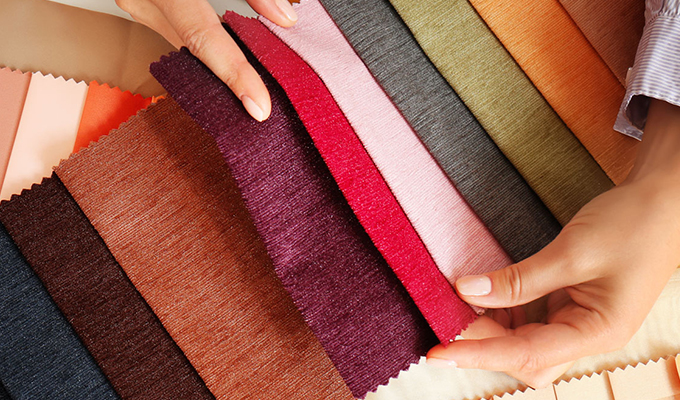a. Cotton:
Cotton fabric, widely used in embroidery, offers a versatile canvas for various stitching styles. Its smooth texture and durability make it an excellent choice for both hand and machine embroidery. Cotton's adaptability shines in projects ranging from intricate floral patterns to bold geometric designs. For instance, when creating a floral motif using satin stitch or French knots, the cotton fabric's stability ensures that the stitches lay smoothly without distorting the design. Moreover, its ability to hold vibrant colors makes it suitable for contemporary embroidery pieces, including modern samplers or abstract compositions.
b. Linen:
Linen's natural sheen and subtle texture make it a favorite among embroiderers aiming for a sophisticated, vintage appeal. With its durability and strength, linen accommodates various techniques, such as drawn thread work or hemstitching, allowing artists to create intricate lace-like patterns. Its compatibility with techniques like surface embroidery, especially when combined with silk threads, results in elegant, heirloom-quality designs. For instance, embroidering delicate monograms or fine borders on linen table linens showcases the fabric's ability to hold meticulous stitches and maintain its structural integrity.
c. Silk:
Silk fabric epitomizes luxury in embroidery, offering a sumptuous base for intricate and delicate designs. Its smooth texture and natural luster lend themselves well to techniques like silk shading or thread painting, where the gradual blending of colors creates stunning visual effects. Embroidering on silk allows for the creation of exquisite motifs like butterflies or blossoms, showcasing the fabric's ability to hold fine details and achieve a lifelike appearance. However, the delicacy of silk demands precision and care during the stitching process to maintain its integrity.
d. Aida Cloth:
Aida cloth, with its grid-like structure and uniform holes, serves as a foundational fabric for cross-stitch embroidery. The fabric's even weave allows for precise and uniform stitching, making it suitable for creating detailed cross-stitch patterns. For example, when stitching intricate samplers or reproducing classic cross-stitch designs, the grid-like pattern of Aida cloth assists in achieving symmetrical and well-defined stitches, regardless of the complexity of the pattern.
2. Techniques and Considerations in Embroidery Fabric Selection:
a. Thread Count:
The thread count of fabric profoundly influences the appearance and intricacy of the embroidered design. Fabrics with higher thread counts, such as high-quality cotton or linen with finer weaves, accommodate detailed stitches like tiny seed stitches or intricate fillings. For instance, when embroidering a landscape scene using long and short stitches to depict foliage and texture, a higher thread count fabric allows for greater precision and realism in the final piece.
b. Stability and Hooping:
The stability of the fabric is crucial, particularly when using embroidery hoops or frames. Fabrics that are too flimsy or stretchy may distort when hooped, affecting the overall quality of the embroidery. When employing techniques like goldwork or stumpwork that involve raised or heavily embellished elements, choosing a stable fabric ensures that the embroidery retains its shape and dimensionality without puckering or sagging.
c. Color and Texture:
Experimenting with different fabric colors and textures can dramatically impact the overall aesthetic of the embroidered piece. For instance, selecting a textured linen for a monochromatic embroidery piece adds depth and visual interest, enhancing the design's tactile appeal. Additionally, utilizing fabrics in contrasting colors for the background and foreground in an embroidery piece creates a striking visual contrast, making the design pop and adding depth to the artwork.
3. Applications and Creative Possibilities:
a. Fashion Industry:
Embroidery fabric plays a pivotal role in haute couture and ready-to-wear fashion. Designers often use embroidery to embellish garments, from intricately embroidered bridal gowns to delicate motifs on casual wear. For instance, renowned fashion houses may employ silk fabrics embroidered with metallic threads to create opulent evening gowns, showcasing the fusion of luxurious materials and meticulous embroidery techniques.
b. Home Décor:
Embroidered fabrics are prevalent in home décor, adorning items such as pillows, table linens, curtains, and wall hangings. Consider an embroidered table runner featuring vibrant floral designs on a linen or cotton base, enhancing the elegance of a dining room. The versatility of embroidery allows for customization to match various interior design themes and styles, whether it's traditional, bohemian, or modern minimalist.
c. Artistic Expressions:
Many contemporary artists and artisans utilize embroidery as a medium for artistic expression. From abstract compositions exploring texture and form to narrative pieces conveying cultural or social themes, embroidery fabric serves as a canvas for creativity. Artists may experiment with unconventional fabrics like organza or tulle to create ethereal embroidered artworks, pushing the boundaries of traditional embroidery techniques and materials.

